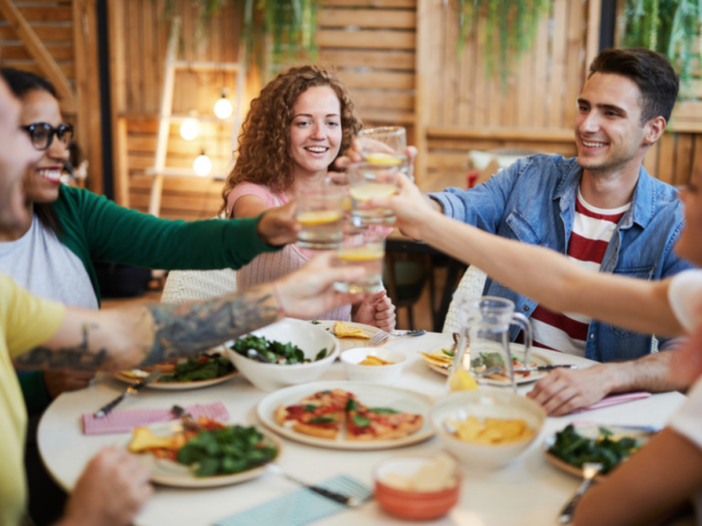
Fall and winter holiday season is upon us! For many people, the celebrations from Thanksgiving through the New Year are synonymous with food — and it also might mean family gatherings, shopping sprees, or catching up on sleep, Netflix, and laundry.
Whether you are alone, celebrating with friends, or sitting down to a real feast, I hope you plan to eat some satisfying food through the holidays.
I want to share some tips with you about how to get the most nourishment out of the food you eat by practicing a few simple things!
Did you know the way we eat matters?
Our bodies process our food based not just on what type it is (protein, fat, carbohydrate, etc.) but also based on how we eat it.
A lot of people don’t know that when we eat while we are in a stressed state, our body assumes we are under attack — so it “stores” our food as an emergency measure. When we are relaxed, on the other hand, our body knows it is safe to process and assimilate the food to nourish us in the present moment!
So, I invite you to experiment with some ways of eating that can help your body take in the food as nourishment, and help you feel more satisfied as well.
Tip 1: Use your senses before and while you eat
Often we eat our food and barely notice what it looks like, smells like, or even how it tastes. If we are distracted, we might not even realize that we’ve eaten our food until we look down and notice it’s gone!
Our brain and body can digest food more effectively if we link up all our senses (sight, smell, taste, sensation, sound) with the process of eating.
Sight
Take a minute to look at your food. Notice the different colors (more colors usually mean better nutrients, so shoot for the rainbow).
Smell
Take a big breath in and smell the aromas. Our taste is linked to smell; we heighten our enjoyment if we smell our food as we eat.
Sound
Also, can you hear different sounds while you chew? Crunch? Slurp? Moosh?
Sensation
Can you feel different textures and temperatures in your mouth?
Taste
What specific tastes do you notice?
Tip 2: Breathe while you eat
Even when we look forward to eating a meal, we may be stressed out when we sit down to eat. Getting food ready can be hectic. Something may happen before the meal that makes us “charged up.” Sometimes there are tensions with people that make eating together strained or awkward. Maybe we are away from people we want to be with.
When we eat when we’re stressed, our body is “on alert” so it stores the food we eat for future emergency use. Whatever the reasons for stress, give yourself permission to relax before you eat food!
The easiest way to relax is to breathe. Look at your plate (see instructions above). Breathe. Take a breath in and let it out. Smile. Take breaks during your meal to stop and breathe. When we relax, our bodies can use the food we eat as nourishment.
Tip 3: Chew! (Seriously — chew a lot.)
Many people chew their food only 2-3 times before they swallow. We might as well open a door directly into our stomach and say: “Here it comes!”
Chewing our food is the first part of digestion. Chewing breaks food into smaller pieces, mixes saliva with food, which helps our body assimilate it.
Chewing also takes time. Did you know that it can take the brain 15-20 minutes after food arrives in your stomach for the brain to “get the memo?” When we eat very rapidly, our stomach may be getting fuller — but our brain doesn’t know it yet.
When we chew (and breathe, and take time to enjoy our food) we give our brain time to catch up with our stomach. Then, we are less apt to overeat, thinking we are still hungry when in fact we have just not gotten the message from our stomach that it’s full.
Tip Recap
- Use your senses when you sit down to a meal: sight, smell, sound, texture, and taste.
- Breathe. Breathe before you start your meal. Take breaks to breathe. Relax and Smile.
- Chew. Chew a lot. See how many times you can chew one bite before you swallow. Have a chewing contest with someone! Who can chew longer? Make it fun…
The most important thing you can do to support your health when you eat is to slow down, enjoy your food, and relax.
Whatever the holidays look like for you this year, and whatever food you have the privilege to eat over the break, I invite you to experiment with these ways of eating. They are simple steps to support your health and wellbeing — without changing anything about what you actually eat.
Written by Ginger Morgan, PhD
Director of Candid–Health and Life Coach
